Welcome to this PowerPoint tutorial! In this lesson, you will learn why menus in different PowerPoint versions can look different and how you can effectively use the search function to navigate the software more efficiently. Users often find themselves in a familiar environment suddenly feeling lost – maybe you've experienced that too. I will guide you through the key points and functions so that you can work with PowerPoint with more confidence and less frustration.
Main Takeaways
- PowerPoint versions can look different due to updates and different screen sizes.
- Dynamic menus adapt to the most common functions and change their layout based on availability.
- The search function is a powerful tool to quickly access the needed functions.
Understanding the Different PowerPoint Versions
Let's start with one of the most common causes of confusion: the version of PowerPoint. If you're wondering why what you learned in your course doesn't look the same for you, it could be because you are using a different version or update. I work with PowerPoint 2019 here, while there are already newer versions, and that will always be the case.
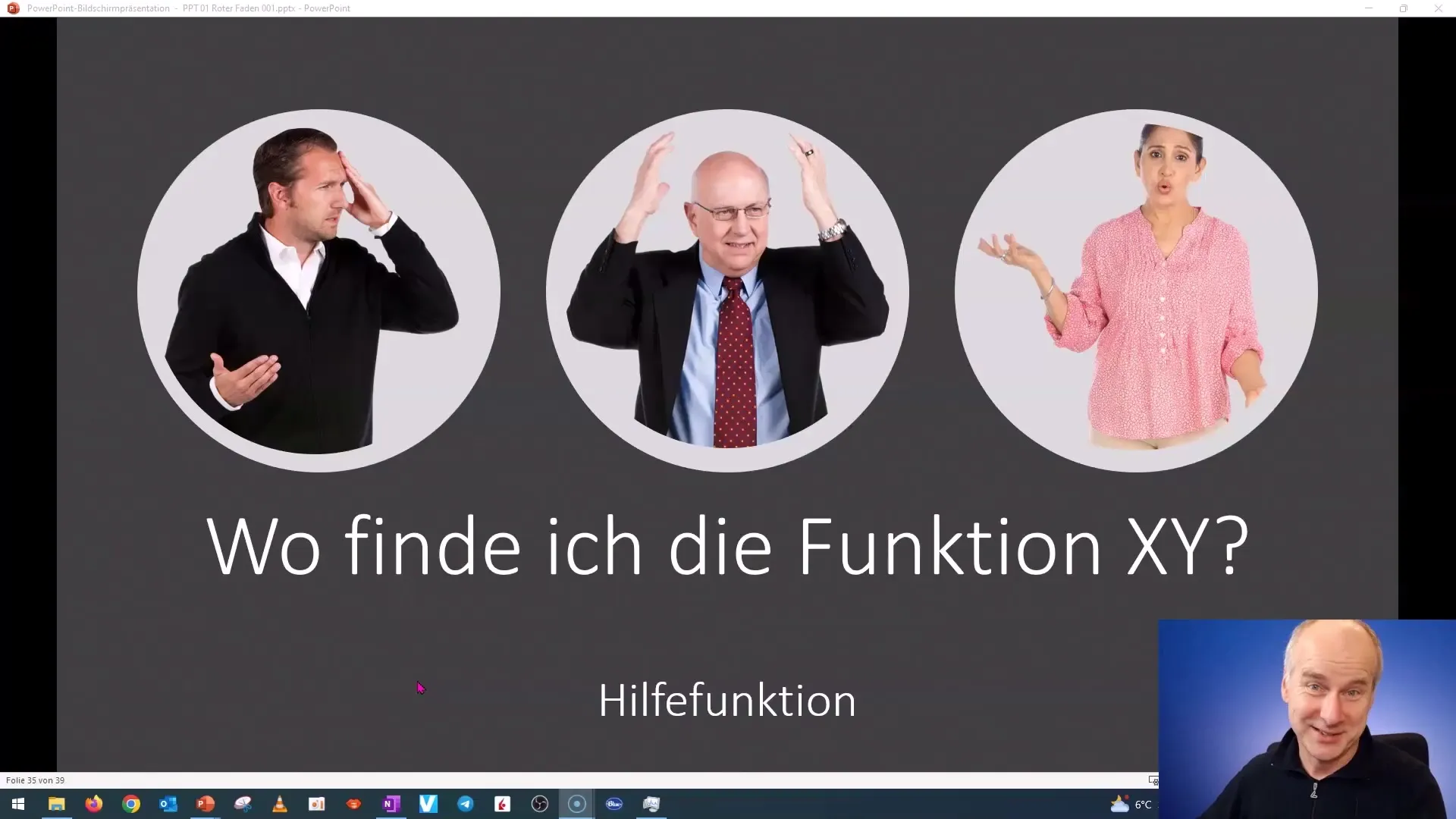
If you're having trouble finding functions, that could also be because the menu structure is dynamic. This means that depending on which objects or content you have selected, the menus can adjust accordingly.
Understanding the Dynamics of Menus
The menus in PowerPoint are designed so that the most frequently used functions are always at hand. When the screen or window is reduced, such as when switching to a smaller monitor, the layout changes. I have observed in my work that elements adjust based on necessity.
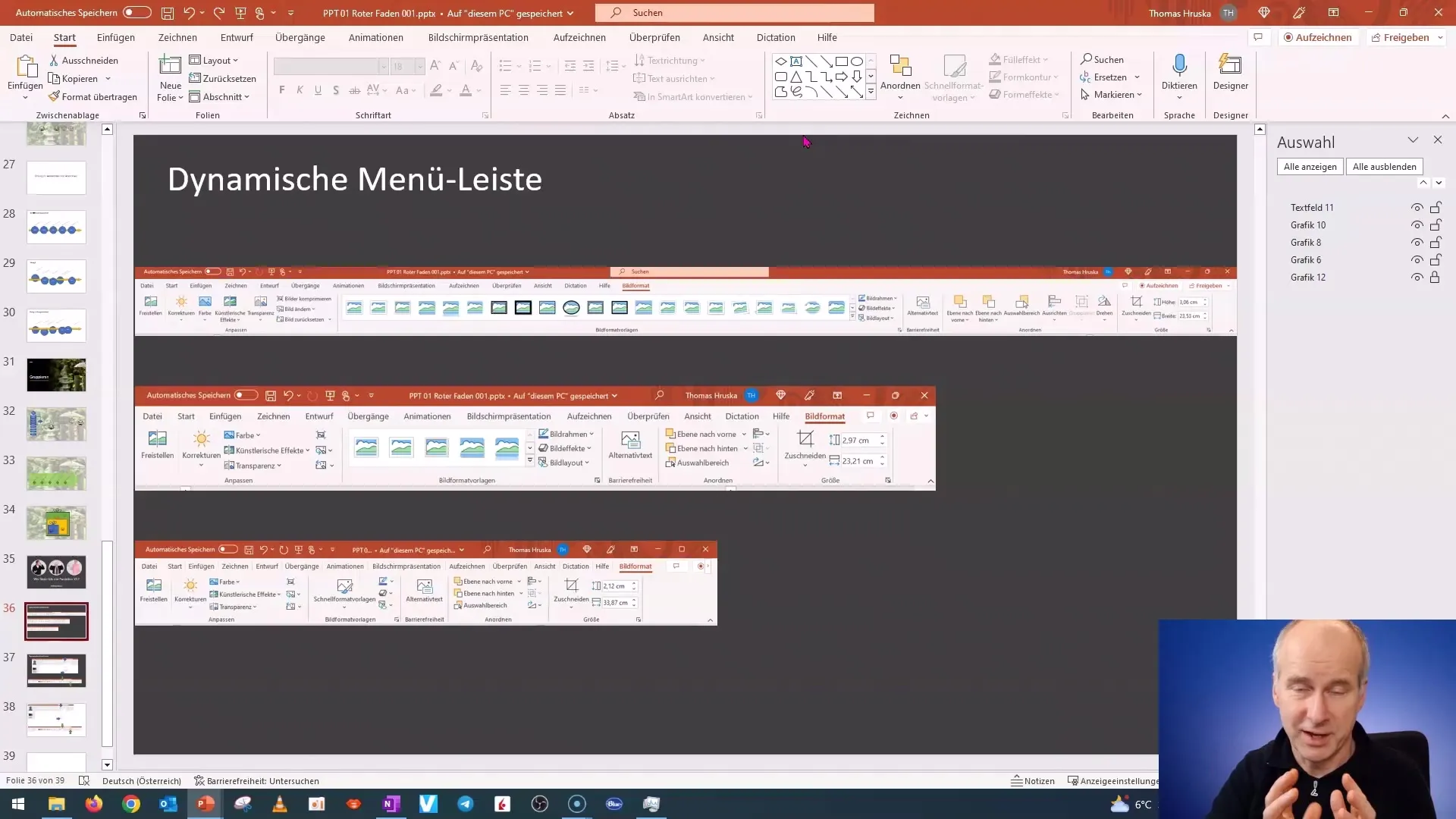
Here you can see that the menu control changes depending on the screen width. If the screen is smaller, the menu becomes more compact and displays the most used options, while less frequently used functions can be found further down in the menu.
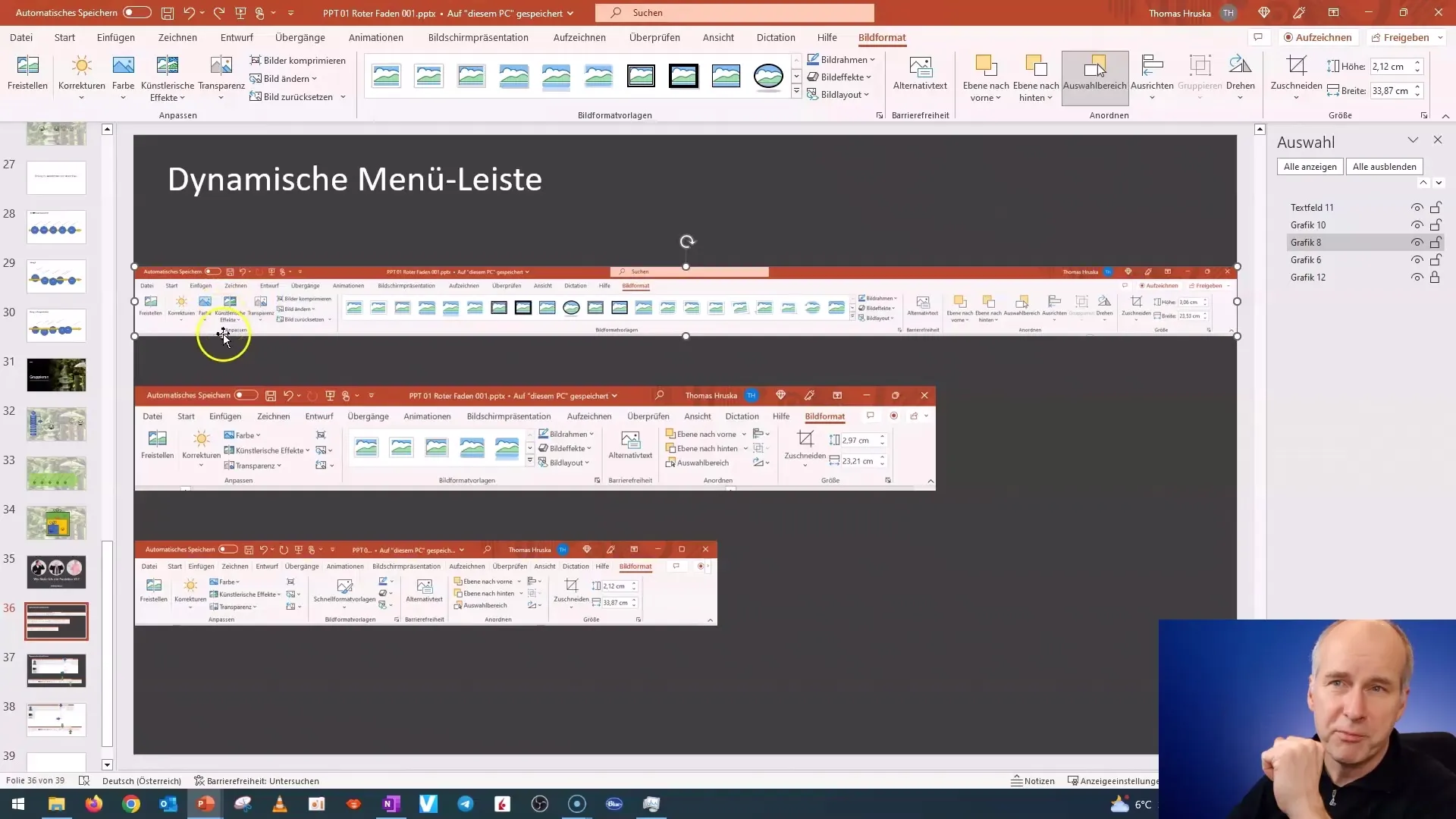
Questioning this dynamics is important to avoid giving up right away. Understanding this will help you make your work more effective.
Working Effectively with the Selection Pane
Let's now look at the Selection Pane, which you may have also learned about in the course. When you select an object, the corresponding Selection Pane menu is available. Another important point is the search function located at the top of the menu. It is especially useful when you're not sure what a function is called.
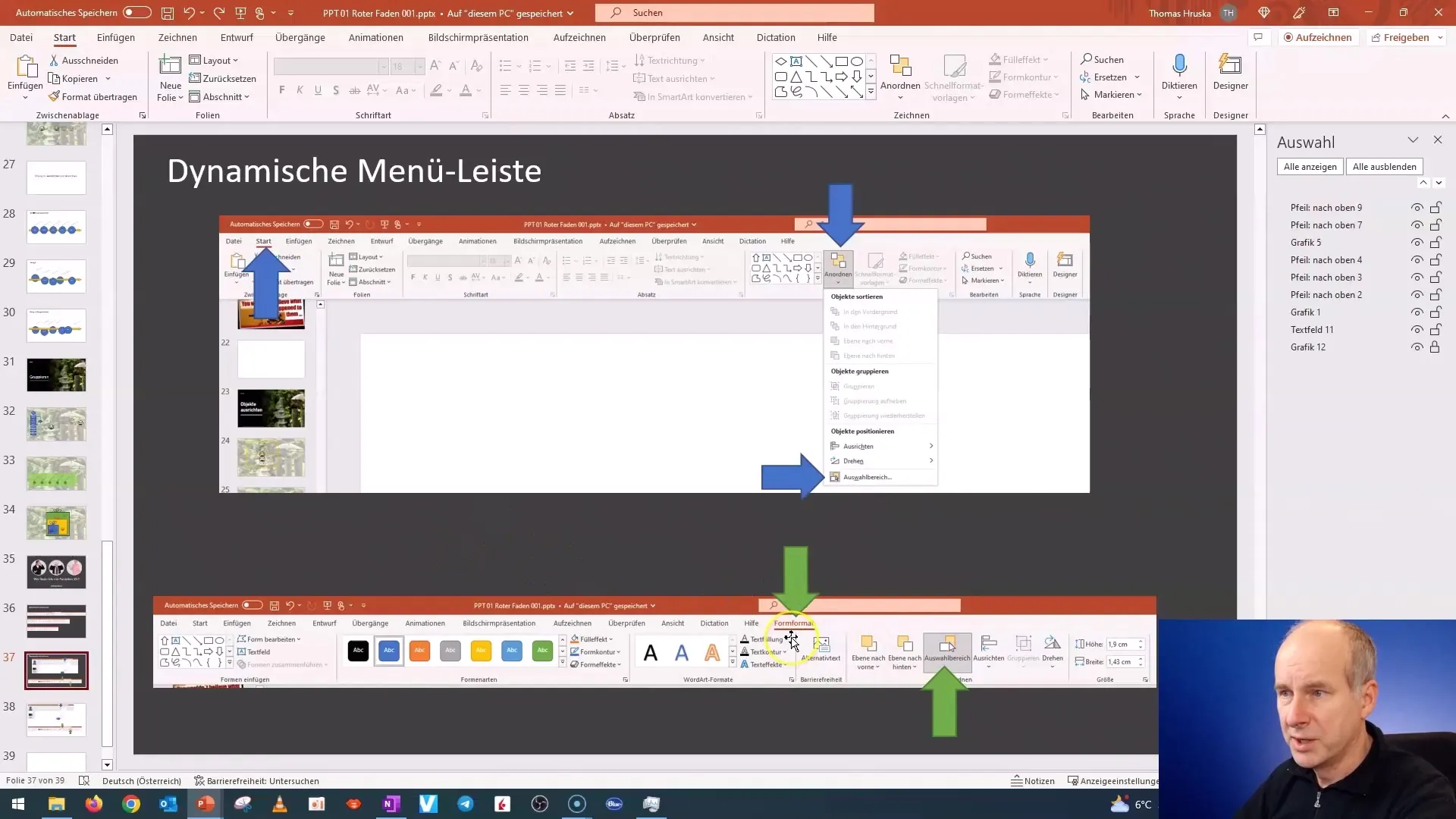
The next time you can't find the Selection Pane, simply type "Selection Pane" into the search bar and the tool will be displayed immediately. This function is extremely helpful and allows you to navigate to the desired option quickly and easily.
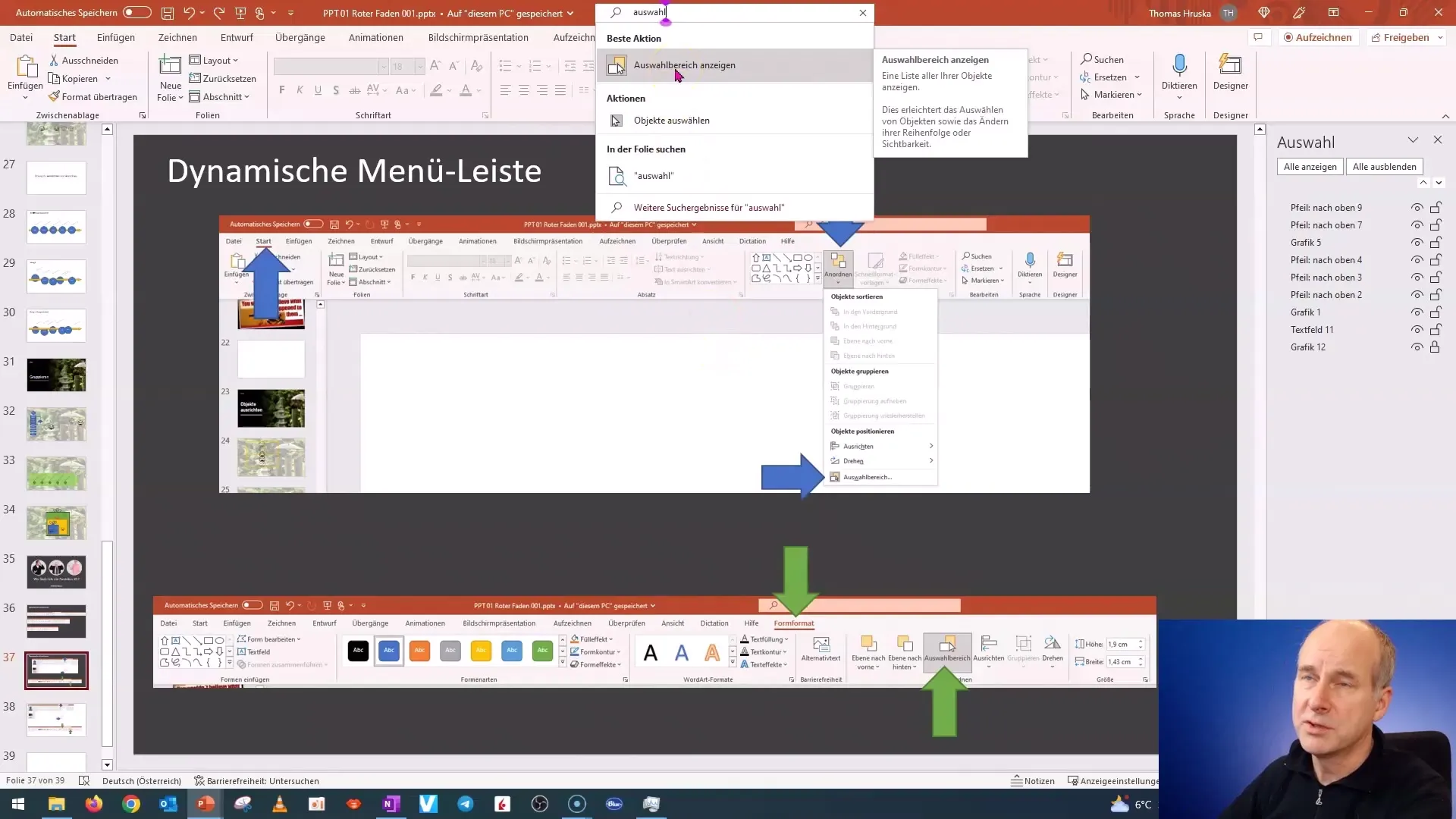
Using Notes to Improve Navigation
I strongly recommend taking notes during your work in PowerPoint. These notes are not only helpful for memory but also for structuring your learning. Write down the details, like what functions are called and where they are located, to save you a lot of time later.
If you ever think about a function and are not sure what it's called, your note will help you quickly remember.
Summary
In this lesson, you have learned that different PowerPoint versions and dynamic menus can cause confusion. You have also learned how important it is to use the search function and take notes to work more quickly and effectively with the program. By applying these tips, you should be able to improve your PowerPoint skills and work with more confidence.
Frequently Asked Questions
What can I do if I can't find functions?You can enter the function you are looking for in the search function at the top of the menu, and it will be displayed to you.
Why does my PowerPoint look different than in the course?This may be due to different PowerPoint versions or updates. Also, the monitor can influence the layout.
How can I work more efficiently with PowerPoint?Use the note function to remember important information, and use the search bar to quickly access the functions you need.


